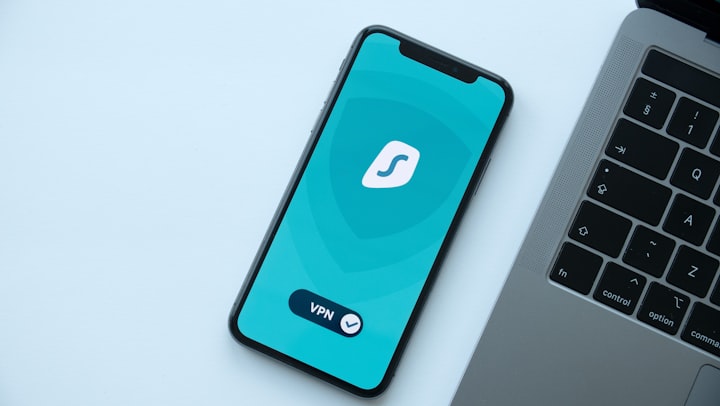Never Forget A Password Again – How to Use Password Manager?
Password manager solves the problem of remembering a ton of password and make managing your password easy.

We browse online and do shopping from e-commerce websites, browse social media, manage cloud storage, pay bills, and many other things. For all our needs, creating an account is essential. After a particular time, remembering too many passwords becomes hectic.
Though now we remember, after some days, we may forget it and have to go through the hassle of resetting the password often.
I am Anirban Saha, an Engineer and Editor of techbullish, have researched a lot about managing passwords in a simple solution using a password manager. I would guide you with the password manager, managing passwords and best practices to follow for your password.
Password Managers or Password Vault comes to the rescue for recovery. Many online companies came out with a solution to effectively solve this common problem that we all face daily. We also need to analyze the Password manager’s pros and cons before choosing one.
What are Password Managers or Password Vault?
Password Managers are store areas like a vault for your passwords as a keeper. It helps keep it safe by protecting it from anyone’s access and simplifying your login and password management effort by providing the right password for the writing website or app.
Many password managers are available for free for Android, iOS, or as a website, but finding the best app for passwords is significant.
Why do you need a Password Manager?
Passwords are cumbersome and hard to remember, especially when you need to place many passwords and use them daily for your tasks.
Password manager or vault saves you from the hassle of managing and digging through the list of a lot of passwords daily and saves time and effort. It handles everything in a breeze.
Different types of a Password manager
1. Desktop-based password managers: These are offline password managers where your password resides on the desktop or laptop, i.e., the encrypted hardware device.
It is secure as it resides locally in your device, whereas you may lose your password if your device gets damaged.
2. Cloud-based password Manager: Here, it resides as encrypted on the provider’s server. The service manager solely manages the security, and you don’t have any control over that.
So while opting for a cloud-based password manager, you should very cautiously choose one.
The main benefit it provides is it is independent of your local desktop or laptop. But without internet connectivity, authentication using your password will not occur. Eg. 1Password and LastPass.
3. Single sign-on (SSO): Single Sign-on is an excellent way to password solution. By single login, we can access all applications, i.e., by Single login. Suppose you went to a fair where you would find many rides to try.
Either you can pay for each ride at their separate counter or a common pass available on their outside counter. Common pass is like SSO that provides shared access to all the passages within the fair.
How to Use a Password Manager?
Password managers can be browser-based, Android app-based, or iOS app. Google Chrome extensively uses Google Password manager.
Similarly, in the Safari Browser, Apple iCloud Keychain can be used. These provide auto-fill password facilities provided directly by Google and Apple, respectively.
You can use it in the browser directly or you can set up password managers that are smartphone based. Browser based password manager would provide you auto-fill facility every time you try to log in from the respective browser.
Pros and Cons of Password Managers
Password managers Pros
- Hassle-Free login: Login can be a breeze, and your online activities can be more comfortable with password managers. Isn’t it cool?
- Easy to keep long passwords: We can easily save our passwords with great difficulty and long as we don’t have to remember them while using a password manager.
- Stores beyond password: Some Password vault may even store your other secret information like credit card information.
- Multiple Device Support: You can access password managers through various devices, even running in different OS.
Password managers Cons
- Compromising your privacy: Opting for any password manager available on the internet can lead your privacy to be compromised.
- Single Point of Failure: It is essential to think about what would happen if you forget your master password where you saved the rest. How would you recover that if you forget it?
- Sync Issue: When we use Password managers daily, we will notice that while using multi-factor authentication, sometimes the OTP Fails to come or fails to sync with the generated OTP due to network issue. So it may sometimes slow down your login process.
- Paying Premium: Some password managers are providing their best features at a premium price. So, for an excellent and secure service, you need to pay premium charges.
- Setup is not hassle-free: Though you might not need to set up their account many times, the initial design is still not hassle-free.
Password best practices
Passwords we choose are significant and may be influenced by our name, birthday, pet name, or anything related to us. However, choosing an easy to remember password may even prove to compromise online security.
There are certain best practices for selecting a password. Google suggests making passwords unique, making them longer and more memorable, and not using any personal details. Find here how to create a strong password.
1. Choosing Unique and Strong Passwords
Passwords chosen should be unique and not repeat. The master password would be very secure that you use to lock your password manager app.
All your passwords need to be very long and unique and it is better to avoid any personal information or dictionary word in a password manager.
2. Using 2-Factor Authentication or Multi-Factor Authentication
Two Factor Authentication adds an extra step to your login. You can’t log in only with your password now.
There is an additional step where you need to provide OTP (One Time Password) from your configured email, phone number, or any authentication app used for Multi-Factor Authentication.
Even this saves you from getting hacked. Even if hackers get your password, they won’t log in due to multi-factor authentication.
3. Risk Vs. Reward
If you choose your password manager carefully, your risk would be less, and the reward would be very high. Check what type of encryptions are used by your password manager. Check if it is easily decryptable or not.
Conclusion
Let's conclude this post!
Password managers are fantastic, but we must take precautions before choosing them and not going with any untrusted ones.
So, finally, before using any password manager, it is advisable to go through the checklist once to be safe and make effective use of the Password vault.
About the Creator
Anirban Saha
Hi, I am Anirban Saha, an Engineer and a technology lover.






Comments
There are no comments for this story
Be the first to respond and start the conversation.